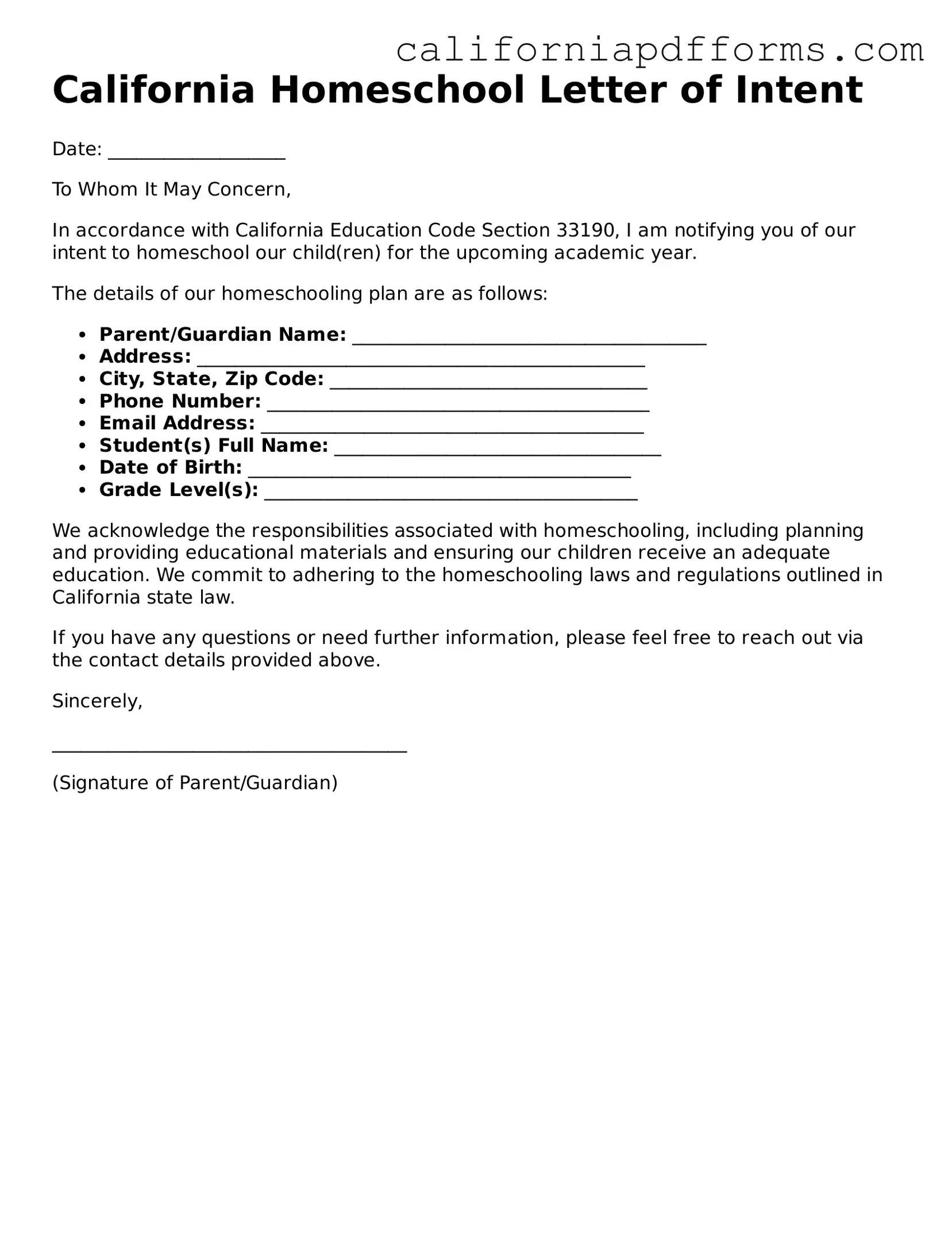Official Homeschool Letter of Intent Template for the State of California
The California Homeschool Letter of Intent is a crucial document that parents must submit to officially notify the state of their decision to homeschool their children. This form serves as a declaration of intent, ensuring that families comply with state regulations while providing a tailored educational experience. Understanding the requirements and process for completing this form is essential for a smooth homeschooling journey.
Ready to take the next step? Fill out the form by clicking the button below.
Open Your Form Online
